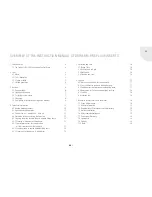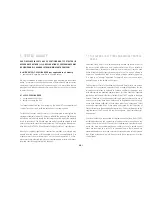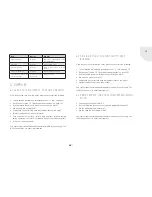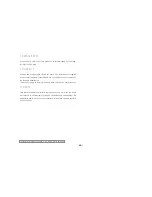
GB
GB
5
2. FUEL
2.1 WOOD
2.1.1 CO
2
-NEUTRALITY
In their information brochure, the “Wald in Not” [Forest in peril] founda-
tion aptly puts this as follows: “Wood is not indebted to nature. Wood is
stored solar energy. The building blocks of wood are sunlight, water and
carbon dioxide. Sunlight is chemically stored for as long as the tree lives.
Solar energy is turned into lignin and cellulose. Burning releases this energy
again. Wood releases no more carbon dioxide than the tree has previously
harvested from the air and bound. It is immaterial in this respect whether
the wood burns or rots in the forest – the carbon dioxide release remains
the same. New trees absorb the carbon dioxide released by burning wood –
creating a natural closed carbon cycle.
Conclusion:
“Burning wood does not disturb nature’s balance.”
Sustainable forestry is regulated by law in Germany. Because new growth of
wood is 40 % higher on average than the wood consumed as firewood and
timber, this leads to an increase in the volume of wood. This is why it makes
economical and ecological sense to burn wood in this form.
2.1.2 TYPES OF WOOD
The heat energy per net kg of wood is about the same for all types of wood.
However, because the cells of the different types of wood have different
sizes and densities, volumes for the same weight are different. This fact is
expressed as raw density in technical specifications. In this measure, the
wood is dry and is weighed per 1 m
3
of wood.
Wood with a low raw density is more suitable for lighting the fire since it is
more easily lit, but more dense wood types are better for sustained burning.
Please ask the installer of your fireplace insert to explain its proper opera-
tion before first operation since the type of the tiled / plastered stove (e.g.
fireplace, masonry stove, hot air stove, hypocaust, etc.) determines how it
should be operated (loading quantity, loading interval, etc.).
Hardness of wood
Wood type*
Raw density (kg/m
3
)
Softwood
Poplar
370
Spruce
380
Fir
380
Pine
430
Hardwood
Beech
580
Ash
580
Oak
630
* All the other indigenous wood types may also be used, but they are not commercially as common or
available in quantity.
More information and a few tips:
• Air-dried, untreated split logs dried to a humidity
≤
18 % are the ideal
fuel.
• The wood should be stored outdoors in a protected, dry and well-
ventilated place.
• Wood that is too moist will have low heating values and cause faster
sooting up of the flue and panes.
• Do not operate open using resinous pine wood: This wood tends to gen-
erate flying sparks
• Use hardwood from deciduous trees for open operation
Our fireplace inserts are designed for use with split logs and wood bri-
quettes. The use of other fuels is not permitted!






































